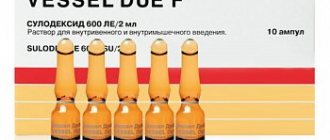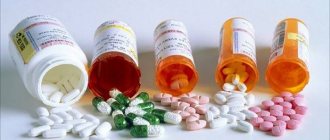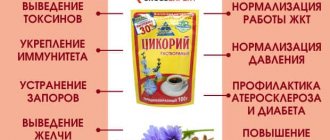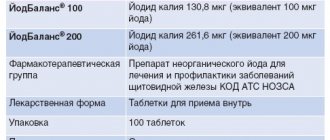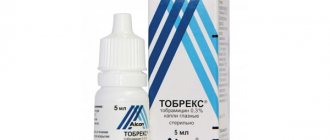Release form and composition
The dosage form of CardiASK is enteric-coated tablets: round, convex on both sides, white, with a smooth shiny surface, possible slight roughness (10 pcs in contour cell packs, 1, 2 or 3 packs in a cardboard pack).
Active ingredient: acetylsalicylic acid, 1 tablet – 50 or 100 mg.
Additional components: plasdon K-90, plasdon S-630, microcrystalline cellulose, calcium stearate, lactose, Tween-80, collicut MAE 100P, talc, titanium dioxide, propylene glycol, corn starch, castor oil.
Analogs
Kardiask has the following analogues:
- Anopyrine;
- Thrombogard 100;
- ASK-cardio;
- Walsh-asalgin;
- Aspicor;
- Thrombo ACC;
- Aspinath, Aspinath 300, Aspinath Cardio;
- Taspir;
- Aspirin, Aspirin 1000, Aspirin Cardio, Aspirin Express, Aspirin York;
- Plidol 100, Plidol 300;
- Acecardole;
- Mikristin;
- Acenterine;
- Acetylsalicylic acid;
- Colfaritis;
- Acylpyrine;
- Zorex Morning;
- Acsbirin;
- Bufferin;
- Thrombopol;
- Upsarin UPSA;
- H-el-pain.
Pharmacological properties
CardiASK is characterized by an antiaggregation effect. It also has antipyretic, analgesic and anti-inflammatory properties.
Pharmacodynamics
The mechanism of the antiplatelet action of acetylsalicylic acid (ASA) is the irreversible inhibition of cyclooxygenase (COX-1). This leads to suppression of platelet aggregation and inhibition of thromboxane A2 synthesis. The antiplatelet effect is most pronounced in its effect on platelets, which lose the ability to re-synthesize cyclooxygenase. The duration of the antiplatelet effect is approximately 7 days after a single dose, and it is more pronounced in male patients than in women.
ASA increases the fibrinolytic activity of blood plasma and reduces the content of vitamin K-dependent coagulation factors (X, IX, VII, II).
Pharmacokinetics
After oral administration, ASA is quickly and almost completely absorbed from the gastrointestinal tract, while being partially metabolized during absorption. During and after absorption, the active component of CardiASK passes into the main metabolite - salicylic acid, which is metabolized in the liver under the influence of enzymes. This results in the formation of metabolites such as salicyluric acid, glucuronide salicylate and phenyl salicylate, which are found in urine and many tissues.
In female patients, metabolic processes proceed more slowly due to weaker enzyme activity in the blood serum. The maximum content of ASA in the blood plasma is recorded 10-20 minutes after oral administration, salicylic acid - after 0.3-2 hours. Since the tablets have an acid-resistant coating, ASA is released not in the stomach (the tablet coating effectively prevents the drug from dissolving), but in the duodenum with its alkaline environment. For this reason, the absorption of ASA in the form of enteric-coated tablets is slower over a period of 3 to 6 hours compared to conventional uncoated tablets.
Salicylic acid and ASA intensively bind to plasma proteins (66–98% depending on the dose) and are quickly distributed throughout the body's systems. Salicylic acid crosses the placental barrier and is excreted in breast milk.
The excretion of salicylic acid is dose-dependent, since its metabolism is limited by the capabilities of the enzymatic system. The half-life reaches 2–3 hours when taking ASA in small doses and 15 hours when taking the drug in high doses (usually when used as an analgesic). Unlike other salicylates, repeated administration of the drug does not lead to the accumulation of non-hydrolyzed ASA in the blood serum. Salicylic acid and its metabolites are excreted in the urine. In patients with normal renal function, 80–100% of a single dose of CardiASA is excreted through the kidneys within 24–72 hours.
Pharmacodynamics and pharmacokinetics
Irreversible inactivation of COX-1 prevents the synthesis of thromboxane A2 and reduces platelet aggregation.
The drug is absorbed in the small intestine. The maximum concentration of the active substance in the blood plasma occurs 3 hours after use. It is partially broken down in the liver to form inactive metabolites.
This drug is excreted through the kidneys unchanged, as well as in the form of metabolites. The half-life is 15 minutes for the active substance and 3 hours for metabolites.
Indications for use
According to the instructions, CardiASK is used to prevent the following diseases:
- Transient cerebrovascular accidents;
- Stroke, including in patients with transient cerebrovascular accidents;
- Thromboembolism after operations and invasive interventions on blood vessels, including angioplasty and endarterectomy of the carotid arteries, coronary artery and arteriovenous bypass surgery;
- Deep vein thrombosis, thromboembolism of the pulmonary artery and its branches, including with prolonged immobilization of the patient due to extensive surgery;
- Acute myocardial infarction in patients with risk factors such as diabetes mellitus, arterial hypertension, hyperlipidemia, obesity, old age, smoking;
- Repeated myocardial infarction.
CardiASK is also used to treat unstable angina.
Contraindications
- Liver/renal failure;
- Gastrointestinal bleeding;
- Erosive and ulcerative lesions of the gastrointestinal tract;
- Hemorrhagic diathesis;
- Aspirin triad (a combination of bronchial asthma, recurrent polyposis of the nose and paranasal sinuses with intolerance to acetylsalicylic acid or other NSAIDs);
- Bronchial asthma caused by taking salicylates and NSAIDs;
- Concomitant use of methotrexate at a dose of 15 mg per week or more;
- Age up to 18 years;
- I and III trimester of pregnancy;
- Lactation;
- Hypersensitivity to acetylsalicylic acid or other NSAIDs.
Relative (diseases and conditions that require caution when using CardiASK due to the risk of complications):
- Gout;
- Hyperuricemia;
- A history of ulcerative lesions of the gastrointestinal tract or intestinal bleeding;
- Bronchial asthma;
- Chronic respiratory diseases;
- Polyposis of the nasal mucosa;
- Hay fever;
- Allergic reactions to drugs;
- Vitamin K deficiency;
- Glucose-6-phosphate dehydrogenase deficiency;
- Concomitant use of methotrexate at a dose of less than 15 mg per week;
- II trimester of pregnancy.
CardiASK, tbl p/o 50 mg No. 60
Type of drug drug
Organs and systems circulatory system, blood vessels
Purpose: angina pectoris, prevention of thromboembolism, prevention of deep vein thrombosis and thromboembolism of the pulmonary artery and its branches, prevention of stroke, prevention of myocardial infarction
Indications for use : primary prevention of acute myocardial infarction in the presence of risk factors (including diabetes mellitus, hyperlipidemia, arterial hypertension, obesity, smoking, old age) and recurrent myocardial infarction; - unstable angina (including suspicion of acute myocardial infarction); - stable angina pectoris; — prevention of ischemic stroke (including in patients with transient cerebrovascular accidents); - prevention of thromboembolism after operations and invasive interventions on blood vessels (including coronary artery bypass surgery, carotid endarterectomy, arteriovenous bypass, angioplasty and stenting of the coronary arteries, carotid angioplasty); - prevention of deep vein thrombosis and thromboembolism of the pulmonary artery and its branches (including with prolonged immobilization as a result of extensive surgery).
Contraindications - erosive and ulcerative lesions of the gastrointestinal tract (in the acute phase); - gastrointestinal bleeding; - bronchial asthma induced by taking salicylates and NSAIDs; - complete or incomplete combination of bronchial asthma, recurrent polyposis of the nose and paranasal sinuses and intolerance to acetylsalicylic acid and other NSAIDs; - hemorrhagic diathesis; - combined use with methotrexate at a dose of 15 mg per week or more; - liver failure (class B and higher on the Child-Pugh scale); - renal failure (creatinine clearance less than 30 ml/min); - chronic heart failure (III-IV functional class according to the NYHA classification; - I and III trimesters of pregnancy; - lactation period; - childhood and adolescence up to 18 years of age; - lactase deficiency, lactose intolerance, glucose/galactose malabsorption syndrome; - hypersensitivity to acetylsalicylic acid and auxiliary components of the drug; - hypersensitivity to other NSAIDs. With caution: - gout, hyperuricemia, because ASA in low doses reduces the excretion of uric acid (it should be borne in mind that ASA in low doses can provoke the development of gout in predisposed patients with reduced excretion of uric acid); - a history of ulcerative lesions of the gastrointestinal tract or gastrointestinal bleeding; - impaired liver function (below class B on the Child-Pugh scale); - impaired renal function (creatinine clearance more than 30 ml/min ); - bronchial asthma, chronic respiratory diseases, hay fever, nasal polyposis, drug allergies, including to drugs of the NSAID group (analgesics, anti-inflammatory, antirheumatic drugs); — II trimester of pregnancy; - proposed surgical intervention (including minor ones, for example, tooth extraction), because ASA may cause a tendency to develop bleeding for several days after taking the drug.
Active ingredient Acetylsalicylic acid
Dosage 50 mg
Method of administration and dosage The drug is taken orally, 1 time/day, preferably before meals. The tablets should be taken with plenty of liquid. CardiASK® is intended for long-term use. The duration of therapy is determined by the doctor. For the purpose of primary prevention of acute myocardial infarction in the presence of risk factors, 50-100 mg/day is prescribed. To prevent recurrent myocardial infarction, for stable and unstable angina - 50-100 mg/day. For unstable angina (if acute myocardial infarction is suspected), 50-100 mg/day is prescribed. For the prevention of ischemic stroke and transient cerebrovascular accident - 50-100 mg/day. For the prevention of thromboembolism after operations and invasive interventions on blood vessels - 50-100 mg/day. To prevent deep vein thrombosis and thromboembolism of the pulmonary artery and its branches, 50-100 mg/day is prescribed.
Side effects From the digestive system: often - nausea, heartburn, vomiting, abdominal pain; rarely - ulcers of the mucous membrane of the stomach and duodenum; very rarely - perforated ulcers of the mucous membrane of the stomach and duodenum, gastrointestinal bleeding, transient liver dysfunction with increased activity of liver transaminases. From the hematopoietic system: increased risk of bleeding due to the inhibitory effect of ASA on platelet aggregation; rarely - anemia. From the side of the central nervous system: dizziness, headache. From the organ of hearing: hearing loss, tinnitus. Allergic reactions: rash, itching, urticaria, Quincke's edema, rhinitis, swelling of the nasal mucosa, cardiorespiratory distress syndrome, as well as severe reactions, including anaphylactic shock.
Pharmacological action of NSAIDs, antiplatelet agent. The mechanism of the antiplatelet action of acetylsalicylic acid (ASA) is based on the irreversible inactivation of COX-1, as a result of which the synthesis of thromboxane A2 is blocked and platelet aggregation is suppressed. It is believed that ASA has other mechanisms of suppressing platelet aggregation, which expands the scope of its use in various vascular diseases. In high doses, ASA also has anti-inflammatory, antipyretic and analgesic effects. The antiplatelet effect develops even after using the drug in small doses and persists for 7 days after a single dose.
Pharmacological group antiplatelet agents
Tablet release form
Method of administration/administration: oral
Minimum age of use : 18 years
Storage conditions The drug should be stored out of the reach of children, in a dry place, protected from light at a temperature not exceeding 25°C. Shelf life: 2 years.
Overdose Salicylate intoxication (develops when taking ASA at a dose of more than 100 mg/kg/day for more than 2 days) can be the result of long-term use of the drug in toxic doses as part of improper therapeutic use of the drug (chronic intoxication) or a single accidental or intentional intake of toxic dose of the drug for an adult or a child (acute intoxication). Symptoms of chronic intoxication with salicylic acid derivatives are nonspecific and are often difficult to diagnose. Mild intoxication usually develops only after repeated use of the drug in high doses and is manifested by dizziness, tinnitus, hearing loss, increased sweating, nausea and vomiting, headache and confusion. These symptoms disappear after reducing the dose of the drug. Tinnitus may appear when the concentration of ASA in the blood plasma is from 150 to 300 mcg/ml. More severe symptoms appear when plasma ASA concentrations are above 300 mcg/ml. The main manifestation of acute intoxication is a severe disturbance of the acid-base state, the symptoms of which may vary depending on the age of the patient and the severity of intoxication. In children, the most typical development is metabolic acidosis. Treatment of intoxication is carried out in accordance with accepted standards, depends on the severity of intoxication and the clinical picture and should be aimed mainly at accelerating the elimination of the drug and restoring the water-electrolyte balance and acid-base state. Overdose is especially dangerous in elderly patients. Symptoms of overdose are mild to moderate: dizziness, tinnitus, hearing loss, increased sweating, nausea, vomiting, headache, confusion, profuse sweating, tachypnea, hyperventilation, respiratory alkalosis. Treatment: gastric lavage, repeated intake of activated carbon, forced alkaline diuresis, restoration of water-electrolyte balance and acid-base state. Symptoms of moderate to severe overdose: respiratory alkalosis with compensatory metabolic acidosis; hyperpyrexia; respiratory disorders (hyperventilation, non-cardiogenic pulmonary edema, respiratory depression, asphyxia); disorders of the cardiovascular system (heart rhythm disturbances, decreased blood pressure, depression of cardiac activity); disturbances in water and electrolyte balance (dehydration); impaired renal function from oliguria up to the development of renal failure, characterized by hypokalemia, hypernatremia, hyponatremia; impaired glucose metabolism (hyperglycemia, hypoglycemia (especially in children), ketoacidosis); tinnitus, deafness; gastrointestinal bleeding; hematological disorders (from inhibition of platelet aggregation to coagulopathy, prolongation of prothrombin time, hypoprothrombinemia); neurological disorders (toxic encephalopathy and depression of central nervous system function (drowsiness, confusion, coma, convulsions)). Treatment: immediate hospitalization in a specialized department for emergency treatment - gastric lavage, repeated intake of activated charcoal, forced alkaline diuresis, hemodialysis, restoration of water-electrolyte balance and acid-base status, symptomatic therapy.
Special instructions ASA can provoke bronchospasm, as well as cause attacks of bronchial asthma and other hypersensitivity reactions. Risk factors include a history of bronchial asthma, hay fever, nasal polyposis, chronic respiratory diseases, and allergic reactions to other drugs (for example, skin reactions, itching, urticaria). The inhibitory effect of ASA on platelet aggregation persists for several days after administration, and therefore may increase the risk of bleeding during surgery or in the postoperative period. If it is necessary to absolutely exclude bleeding during surgery, the use of ASA in the preoperative period should be completely abandoned if possible. ASA in low doses can trigger the development of gout in predisposed individuals (those with reduced excretion of uric acid). ASA in high doses has a hypoglycemic effect, which must be kept in mind when prescribing the drug to patients with diabetes mellitus receiving hypoglycemic drugs. When using GCS and salicylates in combination, it should be remembered that during treatment the concentration of salicylates in the blood is reduced, and after discontinuation of GCS, an overdose of salicylates is possible. Exceeding the dose of acetylsalicylic acid is associated with the risk of gastrointestinal bleeding.
Source : Vidal Medicinal Directory
Registration number P N003825/01
State registration date 30.10.2018
Owner of the registration certificate Canonpharma production
Manufacturer CJSC Kanonpharma Production
Packer of Canonpharma Production CJSC
Brand country Russia
Country of origin: Russia
Drug name CardiASK
Instructions for use of CardiASK: method and dosage
CardiASK should be taken orally before meals with plenty of liquid.
Recommended doses:
- Prevention for suspected acute myocardial infarction: 100-200 mg per day or 300 mg every other day (it is recommended to chew the first tablet so that it is quickly absorbed);
- Prevention of acute myocardial infarction in the presence of evidence of risk: 100 mg per day or 300 mg every other day;
- Unstable angina, as well as prevention of recurrent myocardial infarction, stroke, transient cerebrovascular accident, thromboembolic complications after invasive studies or surgical interventions on blood vessels: 100-300 mg per day;
- Prevention of deep vein thrombosis, thromboembolism of the pulmonary artery and its branches: 100-200 mg per day or 300 mg every other day.
The duration of therapy is determined individually, but CardiASK is used for a long time.
How to take CardiASK
The tablets should be taken with water, without chewing, since crushing the drug ahead of schedule (until it reaches the intestines) can lead to serious complications. Eating does not affect the effectiveness of the product or its metabolism. Common treatment regimens for various diseases:
- in order to prevent myocardial infarction and conditions in which there is a risk of developing thrombosis or thromboembolism: 0.05-0.2 g per day, it is permissible to use the drug every other day, in this case the amount of ASA increases to 0.3 g per day, with the first the tablet is chewable, which will allow you to quickly relieve acute signs of the pathological condition;
- in the presence of negative factors contributing to the development of myocardial infarction, 0.05-0.1 g per day is prescribed; in cases where the medicine is taken every other day, the dose is increased to 0.3 g;
- prevention of other conditions (repeated myocardial infarction, angina, etc.): 0.05-0.3 g per day.
The exact dosage, as well as the duration of treatment, is determined taking into account the patient’s age, the presence of other diseases and the general condition of the body.
The tablets should be taken with water, without chewing.
Taking the drug for diabetes mellitus
It is acceptable to use the drug in question for such a diagnosis, but the dose can be recalculated if necessary.
Side effects
- Respiratory system: bronchospasm;
- Hematopoietic system: increased bleeding; rarely - anemia;
- Digestive system: pain in the abdomen, increased activity of liver transaminases, heartburn, nausea, vomiting, ulcers of the gastric mucosa and duodenum (including perforation), gastrointestinal bleeding;
- Central nervous system: tinnitus, dizziness;
- Allergic reactions: urticaria, anaphylactic reactions, Quincke's edema.
Overdose
Salicylate intoxication (occurs when taking ASA in daily doses exceeding 100 mg/kg for more than 2 days) can result from long-term use of CardiASA in toxic doses in the case of an incorrectly prescribed therapeutic treatment regimen (chronic intoxication) or a single accidental or intentional intake toxic dose of the drug in a child or adult (acute intoxication).
Signs of chronic intoxication with salicylic acid derivatives are not particularly specific and are often difficult to diagnose. Mild intoxication usually occurs only after repeated use of ASA in significant doses and is expressed in hearing loss, tinnitus, headache, dizziness, excessive sweating, nausea and vomiting, and disturbances of consciousness. After reducing the dose of CardiASK, these symptoms disappear. Tinnitus may occur at plasma ASA levels of 150–300 mcg/ml. More severe symptoms are recorded when the level of ASA in the blood plasma exceeds 300 mcg/ml.
A characteristic sign of acute intoxication is a severe disturbance of the acid-base balance, the symptoms of which vary depending on the severity of intoxication and the age of the patient. In children, a typical sign is the development of metabolic acidosis.
Treatment of intoxication is carried out in accordance with approved standards, and its direction is determined by the clinical picture and the severity of intoxication. Therapy is aimed primarily at removing CardiASK from the body and restoring the acid-base state and water-electrolyte balance. Overdose is considered especially dangerous in elderly patients.
Symptoms of mild to moderate overdose include respiratory alkalosis, tachypnea, hyperventilation, excessive sweating, profuse sweating, headache, dizziness, hearing loss, tinnitus, clouded consciousness, nausea, vomiting.
As treatment, gastric lavage, repeated intake of activated carbon, restoration of the acid-base state and water-electrolyte balance, and forced alkaline diuresis are recommended.
Symptoms of moderate and severe overdose are:
- neurological disorders [inhibition of central nervous system functions (confusion, convulsions, drowsiness, coma) and toxic encephalopathy];
- tinnitus, deafness;
- breathing disorders (asphyxia, hyperventilation, depression of the respiratory center, non-cardiogenic pulmonary edema);
- hyperpyrexia;
- respiratory alkalosis accompanied by compensatory metabolic acidosis;
- hematological disorders (hypoprothrombinemia, prolongation of prothrombin time, a number of conditions from inhibition of platelet aggregation to coagulopathy);
- dysfunction of the cardiovascular system (depression of cardiac activity, decreased blood pressure, arrhythmias);
- gastrointestinal bleeding;
- disturbances in water and electrolyte balance (dehydration);
- impaired glucose metabolism [ketoacidosis, hypoglycemia (often in children), hyperglycemia];
- renal dysfunction from oliguria to the onset of renal failure, accompanied by hyponatremia, hypernatremia, hypokalemia.
In this case, the patient is immediately hospitalized in a specialized hospital for emergency treatment, which consists of gastric lavage, repeated intake of activated charcoal, restoration of the acid-base state and water-electrolyte balance, hemodialysis, forced alkaline diuresis and the prescription of symptomatic therapy.
CardiASka overdose
With mild intoxication, hearing impairment, nausea, vomiting, changes in consciousness, and dizziness may occur. If the drug is taken by a child, metabolic acidosis often develops. Therapy in such cases is aimed at removing excess active substance, which is achieved by significantly reducing the dose of the drug or stopping it, taking activated carbon, and normalizing the water-electrolyte balance.
With mild intoxication, hearing impairment may occur.
Symptoms of severe intoxication:
- increase in body temperature to extreme values;
- respiratory dysfunction;
- water-electrolyte imbalance;
- decreased blood pressure, decreased heart function;
- hyper- or hypoglycemia;
- bleeding from the gastrointestinal tract;
- hearing impairment;
- toxic encephalopathy.
In such situations, hospitalization of the patient is required.
special instructions
CardiASA can cause bronchospasm, an attack of bronchial asthma and other hypersensitivity reactions. Patients with the following diseases are at risk: a history of bronchial asthma, chronic respiratory diseases, polyposis of the nasal mucosa, hay fever, allergic reactions to other medications (manifested, including skin rashes, itching, urticaria).
CardiASA taken in high doses can cause gout in predisposed patients (i.e. in patients with reduced excretion of uric acid).
Patients receiving acetylsalicylic acid are at risk of developing gastrointestinal bleeding and, during and after surgery, bleeding of varying degrees.
Patients with diabetes mellitus undergoing hypoglycemic therapy should keep in mind that ASA in high doses can have a hypoglycemic effect.
During treatment, it is recommended to refrain from drinking alcohol, since ethanol increases the risk of damage to the gastrointestinal mucosa and prolongation of bleeding time.
Impact on the ability to drive vehicles and complex mechanisms
Taking CardiASK does not affect the ability to drive vehicles and perform work associated with increased concentration and rapid psychomotor reactions.
Use during pregnancy and lactation
Taking CardiASA in high doses in the first trimester of pregnancy increases the risk of developing defects in the fetus (heart defects, cleft palate), so its use during this period is contraindicated. In the second trimester of pregnancy, salicylates are prescribed only after carefully balancing the benefits for the mother and the potential risk to the fetus, mainly in daily doses of no more than 150 mg and for a short period of time.
In the third trimester of pregnancy, CardiASK in high doses (more than 300 mg per day) can provoke increased bleeding in the mother and fetus, premature closure of the ductus arteriosus in the fetus, inhibition of labor, and taking the drug immediately before birth often leads to intracranial hemorrhage, especially in premature infants children. Therefore, the use of the drug during this period is prohibited.
ASA and its metabolites pass into breast milk in small concentrations. Accidental use of the drug during breastfeeding does not cause adverse reactions in the child and does not require discontinuation of feedings. However, with long-term therapy or taking CardiASA in high doses, lactation should be stopped immediately.
Drug interactions
- Methotrexate: its renal clearance decreases, thereby increasing the effects of methotrexate; the incidence of side effects from the hematopoietic organs increases;
- Digoxin: plasma concentration increases, effects increase;
- Heparin, indirect anticoagulants, thrombolytic and antiplatelet drugs (including ticlopidine), hypoglycemic agents (insulin and sulfonylurea derivatives), valproic acid: their effect is enhanced;
- Uricosuric drugs (including benzbromarone): their effect is weakened;
- Ethanol: additive effect noted;
- Glucocorticosteroids (GCS): the elimination of acetylsalicylic acid is enhanced and the effect of acetylsalicylic acid is weakened, and after discontinuation of GCS, the risk of overdose of ASA increases;
- Anticoagulants, thrombolytics, antiplatelet drugs: the risk of bleeding increases;
- Ibuprofen: the effectiveness of ASA is reduced.
Alcohol compatibility
The medication in question, when consumed simultaneously with alcohol-containing drinks, promotes bleeding and increases its duration.
The medication in question, when consumed simultaneously with alcohol-containing drinks, promotes bleeding.

